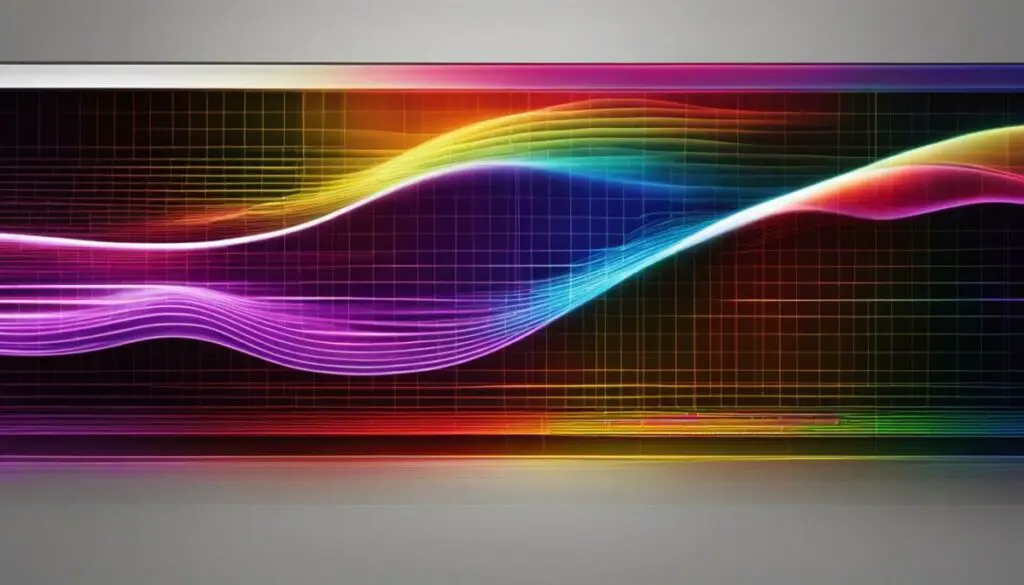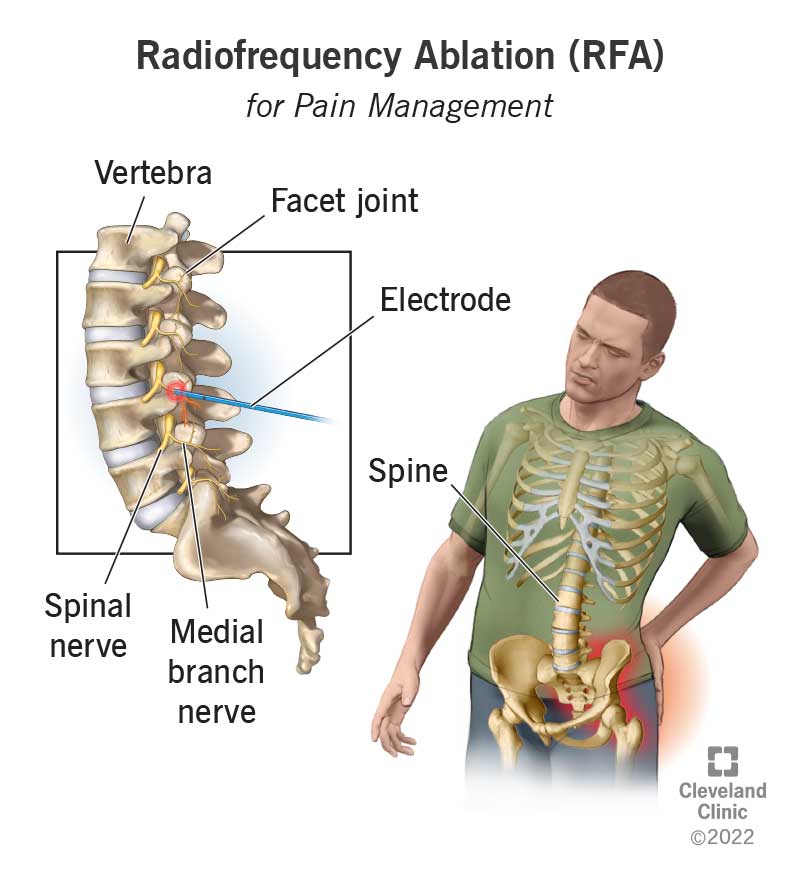Last Updated on 6 months by Francis
When it comes to energy, there are countless forms that surround us every day. From the light we see to the heat we feel, energy is constantly being emitted and absorbed all around us. However, not all forms of energy are created equal. In this article, we will explore the energy levels of radio/TV waves and infrared rays to determine which has more energy.
Though radio/TV waves and infrared rays may seem similar, they differ in many ways. Radio/TV waves are forms of electromagnetic radiation that exist in the radiofrequency range, while infrared rays are a type of electromagnetic radiation that exists in the infrared frequency range. Understanding the unique properties of each is essential to analyzing their energy levels.
By exploring the science behind radio/TV waves and infrared rays, we can gain a better understanding of their energy levels and how they compare. From the sources of each form of energy to their practical applications in industries across the board, we will dive into the details to paint a complete picture.
Contents
Key Takeaways:
- Radio/TV waves and infrared rays are two distinct forms of energy with unique properties.
- Understanding the science behind each form of energy is crucial to analyzing their energy levels.
- By comparing radio/TV waves and infrared rays side-by-side, we can determine which has more energy.
- The energy levels of these forms of energy have practical applications across various industries.
- Research into the energy levels of radio/TV waves and infrared rays is ongoing, with potential implications for future technological advancements.
Understanding Energy Spectrum and Measurement

Before we dive into the energy levels of radio/TV waves and infrared rays, it’s essential to have a basic understanding of the energy spectrum and how energy levels are measured.
The energy spectrum refers to the range of electromagnetic radiation that exists in our universe. From radio waves to gamma rays, each type of electromagnetic radiation has a unique wavelength and frequency. As wavelength decreases, frequency increases, and energy levels rise.
Energy levels are measured in units of energy per photon, such as electron volts (eV) or Joules (J). The energy of a photon is directly proportional to its frequency and inversely proportional to its wavelength.
The energy spectrum is typically subdivided into regions based on frequency or wavelength. The most common way to subdivide the spectrum is into radio waves, microwaves, infrared radiation, visible light, ultraviolet radiation, X-rays, and gamma rays.
Understanding the energy spectrum and how energy levels are measured is essential in analyzing the energy levels of radio/TV waves and infrared rays accurately.
Exploring Radio Waves and Energy Levels
Radio waves are a form of electromagnetic radiation that have the longest wavelength and lowest frequency in the energy spectrum. They are typically produced by oscillations in electrical circuits and are used for various purposes, including communication, navigation, and broadcasting.
Because radio waves have a low frequency and long wavelength, they have a relatively low energy level compared to other forms of electromagnetic radiation. The energy of radio waves is measured in terms of their frequency, which is typically expressed in Hertz or cycles per second.
Radio waves are commonly used in radio and television broadcasting. For example, a typical FM radio station broadcasts at a frequency of around 100 MHz, while a standard TV station broadcasts at a frequency of around 600 MHz.
| Frequency Range | Energy (Joules) |
|---|---|
| 30 kHz – 300 kHz | 1.99 x 10^-27 – 1.99 x 10^-25 |
| 300 kHz – 3 MHz | 6.63 x 10^-25 – 6.63 x 10^-23 |
| 3 MHz – 30 MHz | 1.99 x 10^-23 – 1.99 x 10^-21 |
| 30 MHz – 300 MHz | 6.63 x 10^-21 – 6.63 x 10^-19 |
| 300 MHz – 3 GHz | 1.99 x 10^-19 – 1.99 x 10^-17 |
As shown in the table above, the energy level of radio waves increases as the frequency increases. However, even at their highest frequency range, radio waves still have a relatively low energy level compared to other forms of radiation.
Next, we will explore television waves and their energy levels.
Unraveling Television Waves and Energy Levels

Television waves, also known as TV waves, are a type of electromagnetic radiation that are used to transmit video and audio signals to TV sets. These waves are part of the electromagnetic spectrum, which includes forms of radiation such as X-rays, microwaves, and radio waves.
TV waves have a frequency range of between 54 MHz and 806 MHz, which puts them in the middle of the frequency spectrum of all electromagnetic waves. Their energy levels vary depending on the frequency and wavelength of the waves. Generally, higher frequency waves have more energy than lower frequency waves.
Compared to radio waves, TV waves have a higher energy level due to their higher frequency and shorter wavelength. However, they have a lower energy level than other forms of radiation, such as X-rays and gamma rays.
To better understand the energy levels of TV waves, it is helpful to look at their properties. Like all electromagnetic radiation, TV waves are made up of two components: an electric field and a magnetic field. These fields are perpendicular to each other and to the direction of the wave’s movement.
The energy of TV waves is affected by factors such as distance from the broadcast tower and the quality of the equipment used to receive the signal. Interference from other sources, such as buildings and other electronic devices, can also impact the energy level of TV waves.
| Energy Level | Frequency Range | Wavelength Range |
|---|---|---|
| Low | 54-72 MHz | 4.17-5.56 meters |
| Medium | 76-88 MHz | 3.41-3.91 meters |
| High | 174-216 MHz | 1.39-1.72 meters |
| VHF | 174-230 MHz | 1.3-1.8 meters |
| UHF | 470-806 MHz | 0.37-0.66 meters |
As with all forms of energy, there are practical applications and implications of the energy levels of TV waves. The use of TV waves for broadcasting has revolutionized the entertainment industry, allowing for mass communication and the dissemination of information on a scale never before possible. It has also paved the way for advancements in technology, such as the development of digital television and high-definition broadcasting.
However, the energy levels of TV waves can also have negative effects on human health, with prolonged exposure to high levels of radiation potentially leading to cancer or other health issues. There is ongoing research in this area to better understand the potential risks and to develop safety guidelines.
In the next section, we will explore the energy levels and properties of infrared rays and compare them to the energy levels of radio/TV waves.
The Power of Infrared: Energy Levels and Properties

Infrared radiation, also known as IR radiation, is a type of electromagnetic radiation with longer wavelengths and less energy than visible light. While invisible to the naked eye, infrared radiation is present everywhere in our environment, and it’s crucial to many natural and artificial processes.
The energy levels of infrared radiation are lower than those of radio/TV waves, but higher than those of microwaves. The frequency of IR radiation ranges between 430 THz and 300 GHz, with a corresponding wavelength of 700 nm to 1 mm. Compared to radio/TV waves, infrared radiation has a significantly shorter wavelength, which allows it to transfer more energy over shorter distances.
The Characteristics of Infrared Radiation
There are three types of infrared radiation, based on their wavelengths:
- Near-infrared: This type of radiation has the shortest wavelengths, ranging from 0.75 to 1.4 microns. It’s commonly used in night-vision devices, remote controls, and optical communications.
- Mid-infrared: This type of radiation has wavelengths ranging from 1.4 to 3 microns. It’s used in thermal imaging, chemical sensing, and medical diagnosis.
- Far-infrared: This type of radiation has the longest wavelengths, ranging from 3 to 1000 microns. It’s used in astronomy, weather forecasting, and materials analysis.
Compared to visible light, infrared radiation has a lower frequency and longer wavelength. This characteristic allows it to penetrate certain materials, such as clothing and plastic, and transfer heat. Infrared radiation is also absorbed by objects with darker colors, while it’s reflected by objects with lighter colors, which is why thermal cameras can detect temperature differences in various objects.
The Sources of Infrared Radiation
There are many natural and artificial sources of infrared radiation. Some of the most common natural sources include the sun, fires, and the Earth’s own thermal radiation. On the other hand, artificial sources of infrared radiation include incandescent light bulbs, halogen lamps, and infrared heaters.
The use of infrared radiation has many practical applications, such as in heating and drying processes, medical treatment, and communication technologies. Infrared radiation is also used in security systems, as it can detect intruders and movement.
Comparing Infrared to Radio/TV Waves
While infrared radiation has a higher energy level than radio/TV waves, it is still lower than the energy carried by visible light. Ultimately, the comparison between these forms of energy depends on the context and the specific application.
For example, radio/TV waves are used in broadcasting television and radio signals over long distances, while infrared radiation is used in remote controls and thermal imaging. Both types of radiation have unique properties and are essential in various industries and technologies.
Comparing Radio/TV Waves to Infrared: Which Has More Energy?

Now that we have explored the energy levels of both radio/TV waves and infrared rays, it’s time to compare them directly. To do this, we must first consider the frequency and wavelength of each form of energy.
Radio/TV waves have a much lower frequency and longer wavelength than infrared rays. The energy of these waves is measured in kilohertz (kHz) to megahertz (MHz) and ranges from about 10-6 to 106 joules per square meter. In contrast, infrared radiation has a frequency measured in terahertz (THz) and an energy range of about 10-3 to 103 joules per square meter.
While infrared radiation has a higher frequency and shorter wavelength, radio/TV waves have a higher energy output due to their stronger amplitude. This amplitude is measured in volts per meter (V/m) and ranges from about 10-5 to 107 for radio/TV waves, compared to only 10-8 to 10-3 for infrared radiation.
It’s important to note that the energy output of both forms of energy is affected by various factors, including distance from the source, interference, and equipment efficiency. Thus, the actual energy levels of radio/TV waves and infrared rays in real-world applications may vary.
| Radio/TV Waves | Infrared Radiation |
|---|---|
| Lower frequency and longer wavelength | Higher frequency and shorter wavelength |
| Energy measured in kilohertz (kHz) to megahertz (MHz) | Energy measured in terahertz (THz) |
| Energy output ranges from about 10-6 to 106 joules per square meter | Energy output ranges from about 10-3 to 103 joules per square meter |
| Amplitude ranges from about 10-5 to 107 volts per meter (V/m) | Amplitude ranges from about 10-8 to 10-3 volts per meter (V/m) |
Based on scientific evidence, it is clear that radio/TV waves have a higher energy output than infrared radiation. This is due to their stronger amplitude, which compensates for their lower frequency and longer wavelength. However, both forms of energy have unique properties and practical applications, and the choice of which to use depends on the specific needs of each industry and technology.
Real-World Applications and Implications

Energy Levels Comparison
While the energy levels of radio/TV waves and infrared rays differ, both forms of energy have unique properties that make them useful in various applications. By understanding the characteristics of each, we can make informed decisions about which form of energy to use for specific purposes.
It’s also worth noting that the energy levels of both radio/TV waves and infrared rays can be affected by various factors, such as distance, interference, and equipment efficiency. Therefore, it’s crucial to consider these factors when using these forms of energy in practical applications.
In the next section, we will explore the factors that can affect energy levels in greater detail.
Factors Affecting Energy Levels

While radio/TV waves and infrared rays have their unique properties, their energy levels can be affected by various factors. Below, we will outline some of the factors that can impact the energy levels of these forms of energy:
| Factors | Explanation |
|---|---|
| Distance | The distance between the source of the waves/rays and the receiver can impact energy levels. As the distance increases, the energy levels decrease, which can affect the quality of the signal. |
| Interference | Objects or signals that obstruct the path of radio/TV waves and infrared rays can impact their energy levels. For instance, walls, buildings, and other materials can affect the clarity of the signal, reducing energy levels. |
| Equipment efficiency | The efficiency of the equipment used to produce and transmit radio/TV waves and infrared rays can impact their energy levels. Old or malfunctioning equipment may not be able to produce high-energy waves/rays, reducing their energy levels. |
It is essential to understand these factors in various industries that rely on these forms of energy, such as telecommunications and electronics. Now, let’s take a closer look at how these factors can shape the energy levels of radio/TV waves and infrared rays.
Future Developments and Research
As technology continues to advance, so too will our understanding of radio/TV waves and infrared energy levels. Ongoing research seeks to explore new ways to harness and utilize these forms of energy.
One area of focus is exploring the potential for using radio waves to power devices wirelessly. Researchers are investigating ways to create networks of wireless power transmission, which could ultimately revolutionize the way we power our devices. Initial tests have been promising, and this technology could have significant implications for industries such as healthcare and transportation.
Another area of focus is developing more efficient technologies for detecting and analyzing radio and infrared waves. New types of sensors and equipment are being developed that can better detect and measure these forms of energy, leading to more accurate readings and improved applications.
As we continue to explore the potential uses and properties of these forms of energy, we may uncover new and exciting applications. From improving communication networks to developing new medical technologies, the possibilities are vast.
Conclusion
After analyzing the energy levels of radio/TV waves and infrared rays, it is clear that both forms of energy have unique properties and applications. However, based on scientific evidence, infrared rays have a higher energy level than radio/TV waves.
Understanding the energy levels of these forms of energy is crucial for various industries. For example, the telecommunications industry relies on radio waves for communication, while the healthcare industry uses infrared radiation for medical imaging. Additionally, advancements in technology may lead to new applications for these forms of energy in the future.
Factors such as distance, interference, and equipment efficiency can affect the energy levels of radio/TV waves and infrared rays. Ongoing research in this field may lead to further developments and discoveries in the future.
In conclusion, the energy levels of radio/TV waves and infrared rays have important implications for various industries and technological advancements. While both forms of energy have their unique properties, infrared rays have a higher energy level than radio/TV waves.
FAQ
Which has more energy: radio/TV or infrared?
The energy levels of radio/TV waves and infrared rays are different. Radio/TV waves have higher energy levels compared to infrared rays.
What is the energy spectrum and how are energy levels measured?
The energy spectrum refers to the range of different forms of energy. Energy levels are measured using units such as watts or joules, depending on the type of energy being measured.
How are radio waves produced and what are their energy levels?
Radio waves are produced by oscillating electric currents in antennas. Their energy levels vary depending on factors such as the frequency and power of the waves.
What are television waves and how do their energy levels compare to radio waves?
Television waves are a specific range of radio waves that carry video and audio signals. Their energy levels are similar to radio waves but can vary depending on the specific frequency and power.
What are the energy levels and properties of infrared rays compared to radio/TV waves?
Infrared rays have lower energy levels compared to radio/TV waves. They are a form of electromagnetic radiation emitted by objects due to their temperature.
Which form of energy, radio/TV waves or infrared rays, has more energy?
Radio/TV waves have higher energy levels compared to infrared rays.
How are the energy levels of radio/TV waves and infrared rays applied in real-world settings?
Radio waves and infrared rays have various practical applications, including communication technology, remote sensing, and thermal imaging, among others.
What factors can affect the energy levels of radio/TV waves and infrared rays?
Factors such as distance, interference, and equipment efficiency can affect the energy levels of both radio/TV waves and infrared rays.
What are some current developments and ongoing research regarding the energy levels of radio/TV waves and infrared rays?
Ongoing research aims to improve the efficiency and applications of radio/TV waves and infrared rays, leading to advancements in industries such as telecommunications, broadcasting, and thermal imaging.
What conclusion can be drawn from comparing the energy levels of radio/TV waves and infrared rays?
Scientific evidence supports the conclusion that radio/TV waves have higher energy levels compared to infrared rays.








